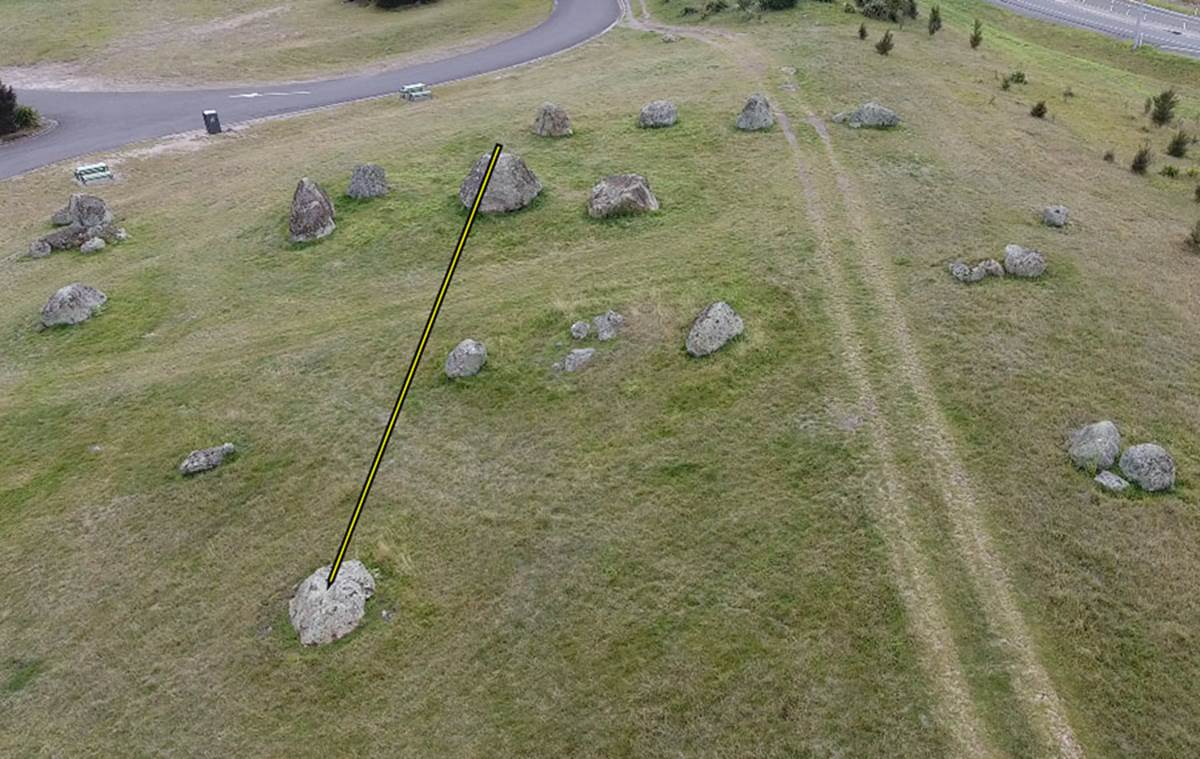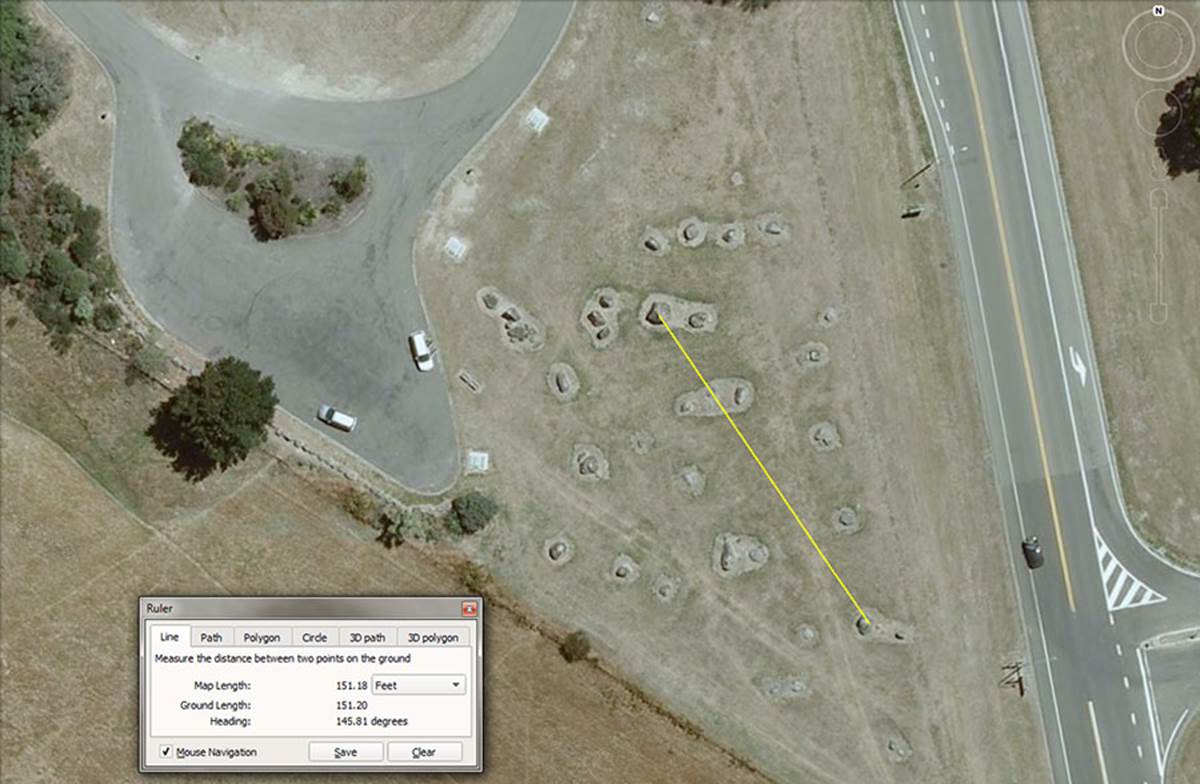
POSITION 9.

The distance to position 9 is 151.2 feet and the angle code is 148.5-degrees.
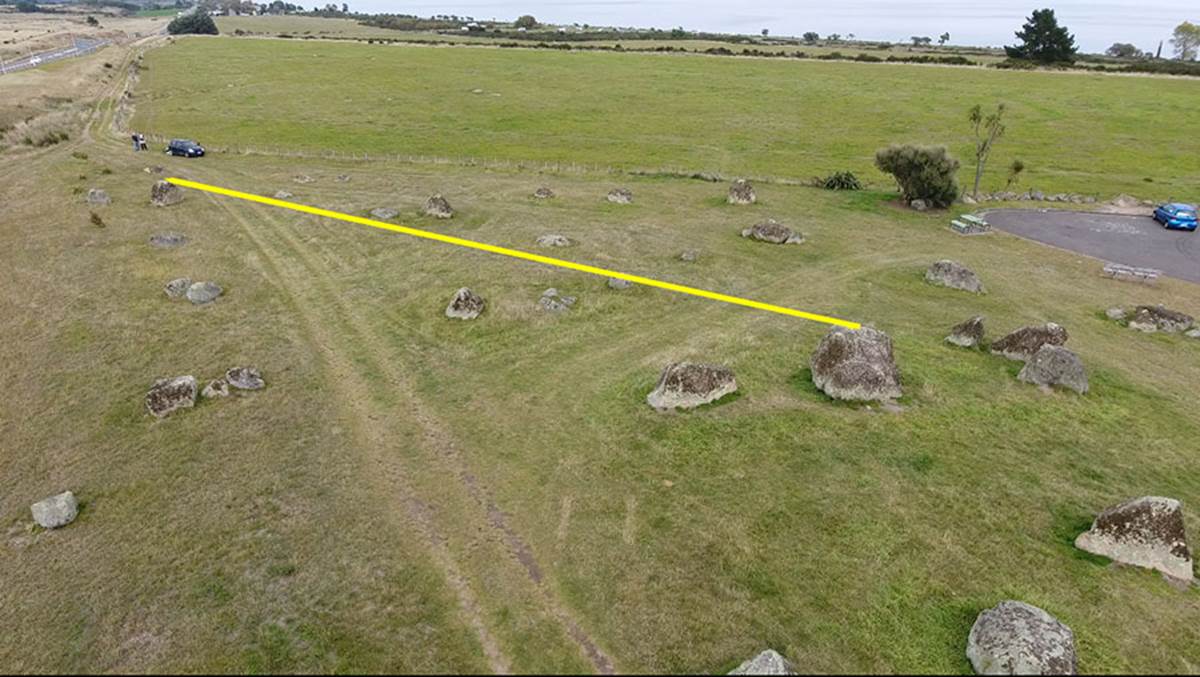
A view from the hubstone to position 9. To the east of the obelisk is a boulder that was coded to sit 160-feet out @ 144-degrees. The line would skim its western side, so it might have been shunted or rolled slightly east sometime over the centuries.
A progression based upon 151.2 goes:
151.2, 302.4, 453.6, 604,8, 756, 907.2, 1058.4, 1209.6, 1360.8, 1512, … 2268, … 3024, … 3628.8, … 3780, … 6048, … 6804 …, 362880, … 130636800.
1. It can be seen that this string relates to navigation and the equatorial circumference of the Earth as encoded into the Great Pyramid’s base dimensions. Also, the 151.2 increment, when read as days, can be applied to the 6804-day lunar cycle as 1/45th part. The sum of 151.2-days would be 3628.8-hours & 362880-feet would be 1-degree of equatorial arc.
2. The angle of 148.5-degrees creates the following progression:
145.8, 291.6, 437.4, 583.2, 729, 874.8, 1020.6, 1166.4, 1312.2, 1458, … 131220000.
3. The Roman’s, like the Greeks and others, adopted their measurement standards from much older civilisations and thus we find so-called Roman and Greek measurements encoded into the landscapes of Avebury Henge, Brodgar Ring and Newgrange, dating from before 3000 BC. The sum of 14.58-inches was an ancient Greek Pygon measurement.
The Roman foot was found to be 11.664 inches by John Greaves, professor of geometry, who in 1639 went to Rome specifically to ascertain the length of an ancient Roman foot. Greaves located a monument of Roman architect, Stalius Asper and measured bas relief instruments used by him in the first century A. D. Greaves concluded, after careful investigation, that the Roman foot, 'contained 1944 such parts as the English foot contains 2000'. This means a Roman foot of 11.664 inches.
The Roman pace was 58.32-inches or 5 Roman feet. Their mile was 4860 English feet of 12-inches, which equated to 5000 Roman feet of 11.664-inches.
The druidic bronze plaque called The Calendar of Coligny (a lunisolar parapegma board for tracking the sun’s and moon’s daily progress) measures 4.86-feet in length (58.32-inches) or 5 Roman feet of 11.664-inches. Its height is 2.953125-feet or 35.4375-inches (the lunar month was 29.53125 days, which equates to 29 & 17/32nds days and the 35.4375-inch value for the height of The Calendar of Coligny will be recognisable as coding the lunar year duration.
The Bush Barrow Lozenge artefact of England, dating to 2500-3000 BC is 7.29-inches in one cross measure, or 1/8th of 58.32-inches.The sum of 7.29-inches is ½ a Greek Pygon.
Under a tradition that survived into mediaeval times in Europe, 75 Roman miles represented 1-degree of arc for the world or 4860 (English) feet … X 75 = 364500-feet … X 360 = 131220000-feet or 27000 Roman miles for the full equatorial circumference.
POSITION 10.
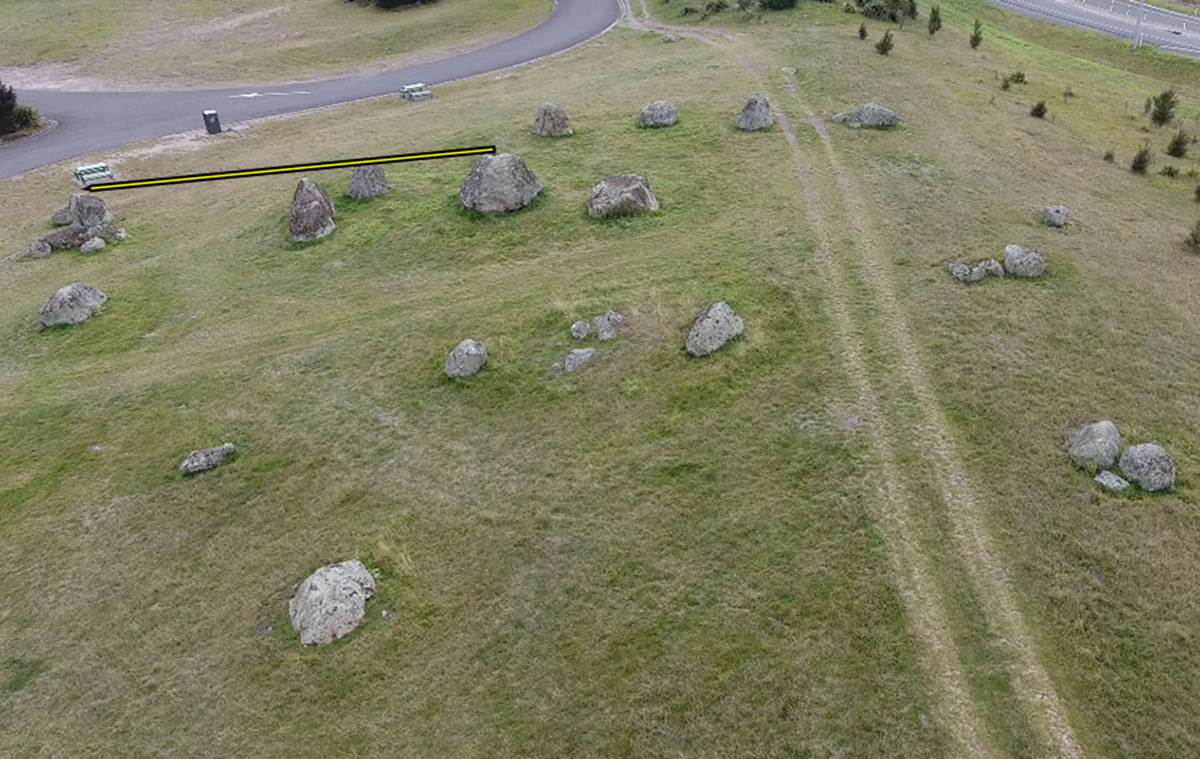
Position 10 is composed of 3 large obelisks and smaller boulders.
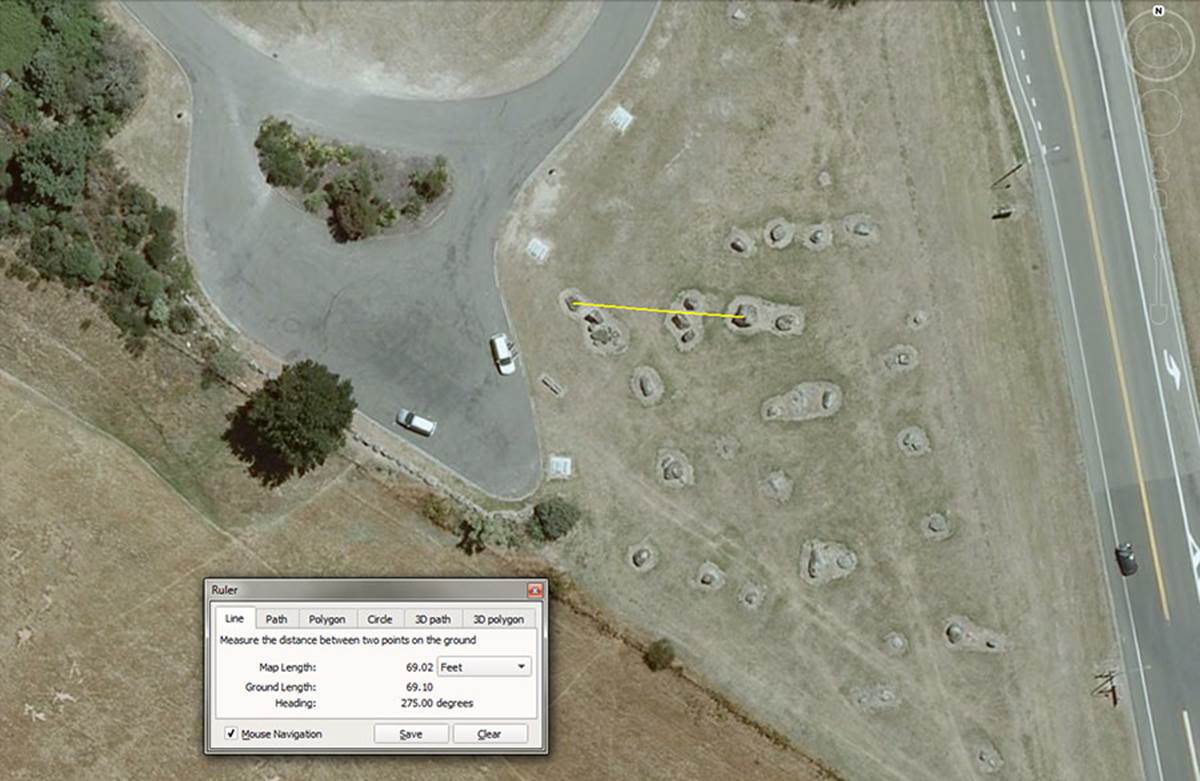
The first recumbent obelisk is coded to give a reading of either 69.12-feet or 68.75-feet distance from the centre hubstone at a degree angle of 275-degrees. The distance readings relate to 1-degree of arc for the world under the two main, slightly different equatorial circumference readings.
The second obelisk in the cluster would provide tutorials for 60.50. 60.48. 60, 59.0625, & 58.32 feet respectively, on an angle of 270-degrees (due west). These are predominantly navigational codes, although 59.0625 (days) would be 2 lunar months.
The third obelisk would provide tutorials for 59.0625, 58.32, 57.6, & 56.7 feet respectively, on an angle of 262.5-degrees. These are predominantly lunar codes.
POSITION 11.
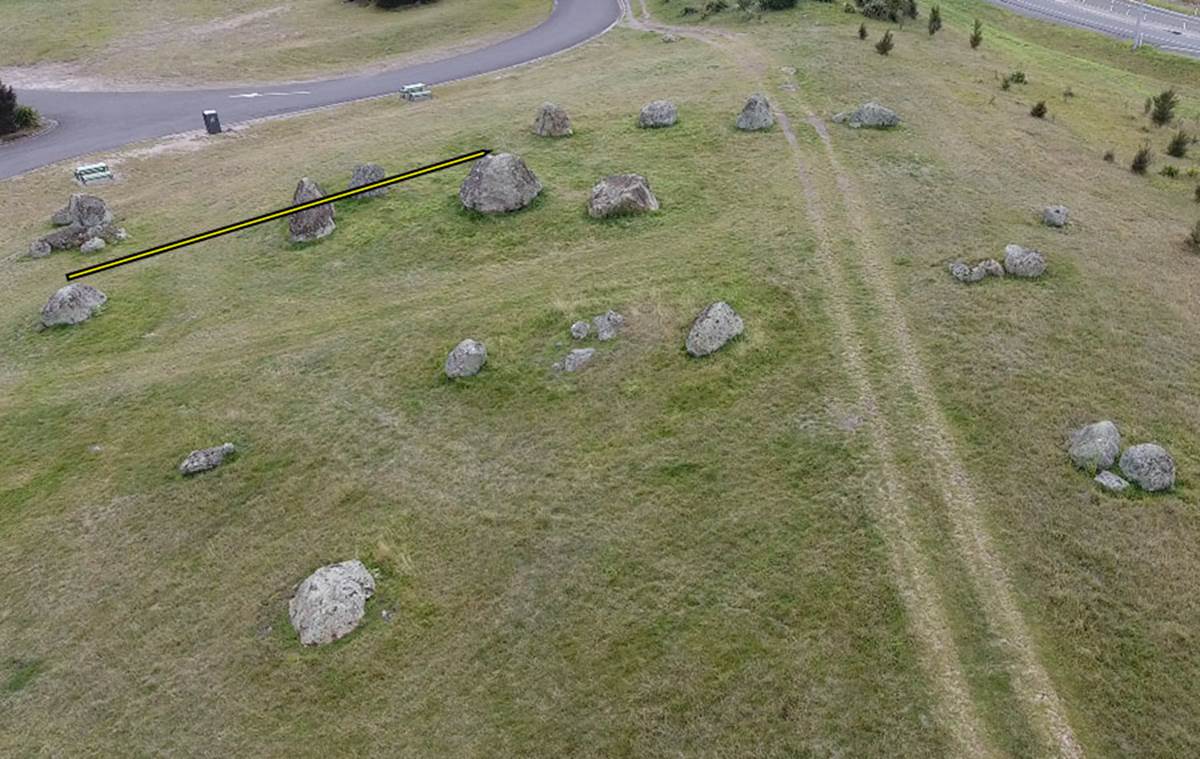
This position provides a coded angle back to the hubstone. The distance is 48.6-feet and the angle is 55-degrees. The distance could also be read as 48 or 47.5-feet, respectively, over the girth of the obelisk.
A mathematical progression based upon 48.6 goes:
48.6, 97.2, 145.8, 194.4, 243, 291.6, 340.2, 388.8, 437.4, 486, 534.6, 583.2, … 680.4, 729, 777.6, etc.
This number string provides codes for the equatorial size if the Earth (777.6-miles X 32); the lunar nutation cycle (6804-days); etc.
The 55-degree value relates, of course, to the “11” family of measurement numbers, ranging from the ancient fathom (5.5-feet) to the league (16500-feet). Silbury Hill in Southern England was built to be slightly elliptical at its base and measures 550-feet one way and 525-feet 90-degrees opposed. Whereas the 550-feet cross measure relates to the 5280-feet mile and its divisions, the 525-feet cross measure relates to the 5250-feet mile and its divisions.
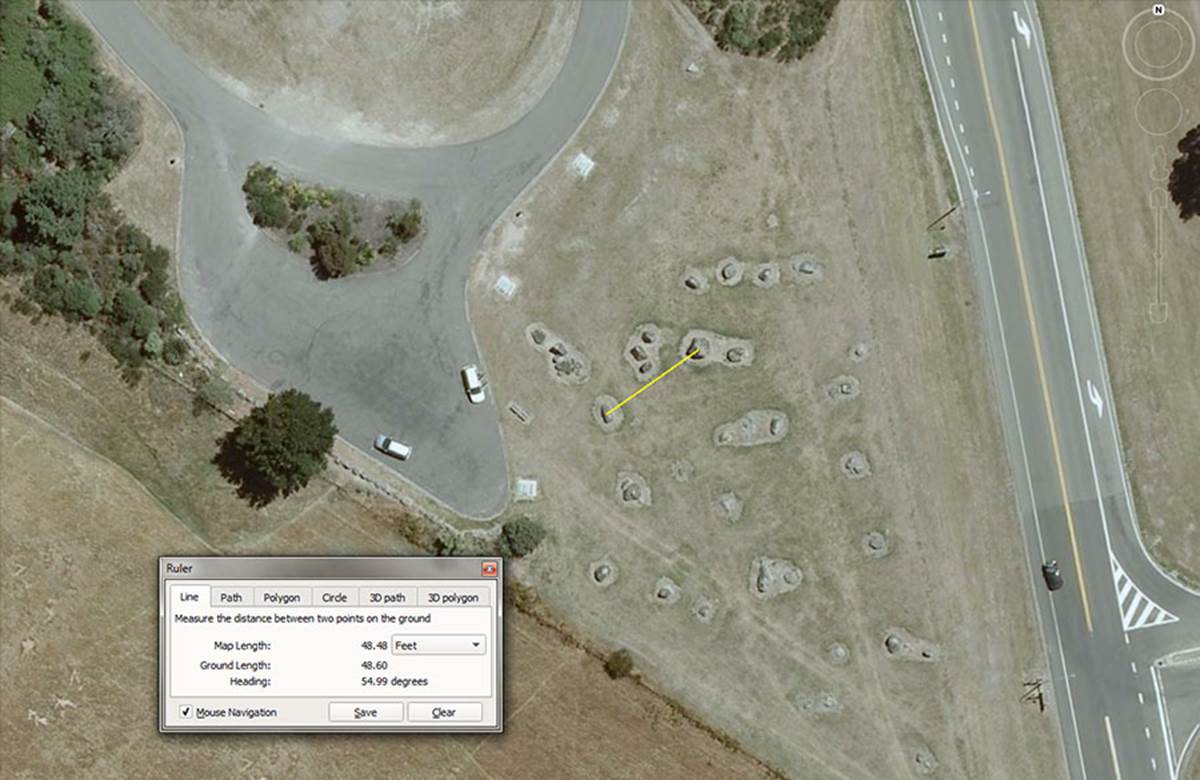
POSITION 12.

Position 12 sits 52.8-feet out from the hubstone on an angle of 187.5-degrees. Whereas the distance is in homage to the 5280-feet mile, the 187.5-degree angle provides a mathematical string that can relate to the 5250-feet mile, degree angle segmentation of the 360-degree compass, the equatorial circumference of the Earth, the Egyptian Royal cubit of 20.625-inches, etc., … a very versatile progression.
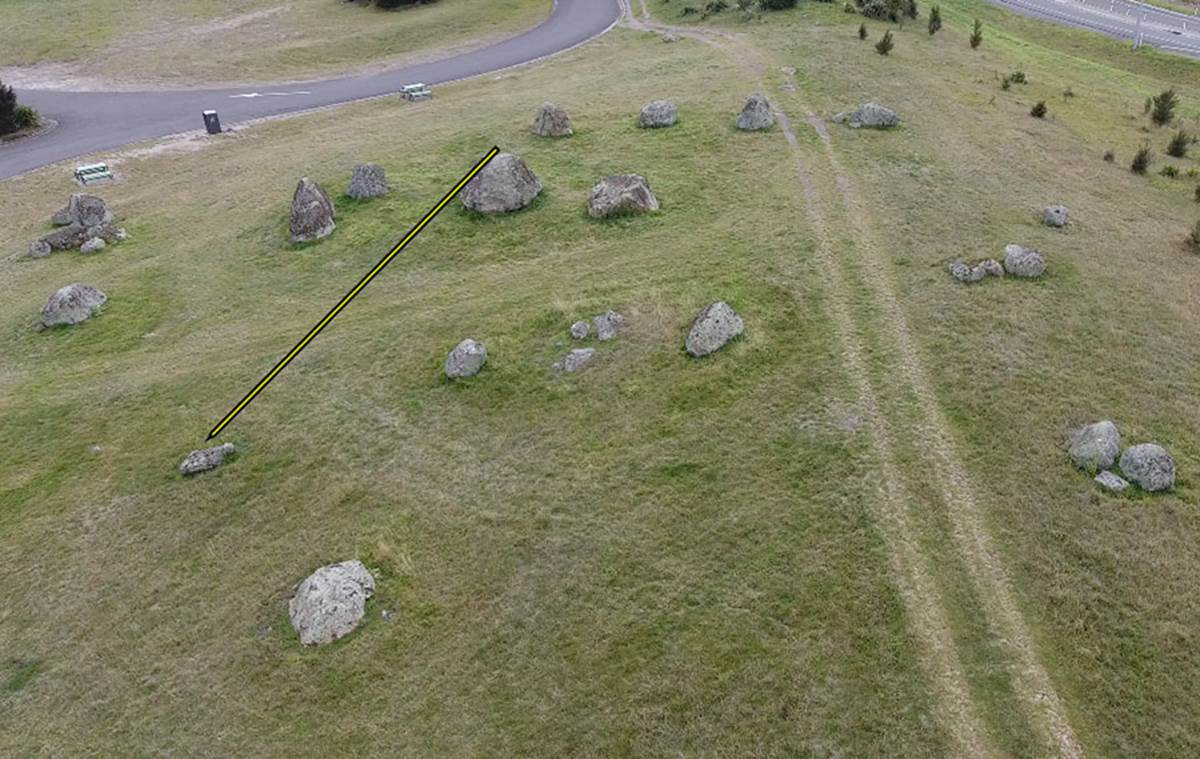
POSITION 13.
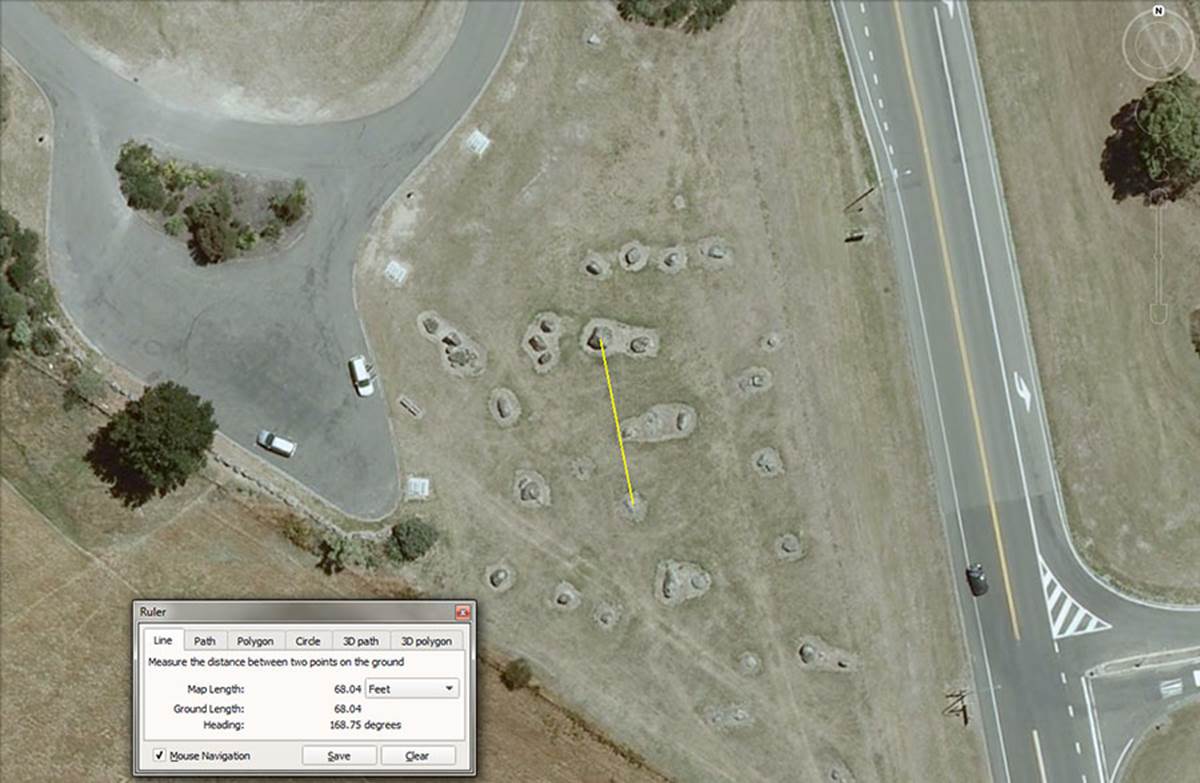
Position 13 sits 68.04-feet from the centre hubstone at an angle of 168.75-degrees. Other coded distances that could be incorporated into the girth of this boulder are 66 (1 chain), 67.2, 68.4, 69.12, 70.4 & 72-feet respectively. The boulder’s girth could also accommodate the important ancient value 166.6666-degrees.
Amongst other things, there would be 21 periods of 16.875-days (405-hours) in a lunar year. The distance figure, of course, relates to the lunar cycle duration of 6804-days.
In a 3-4-5 triangle, one side will be 1.666666 less in length than the hypotenuse, whereas the other side will be 1.25 less.
